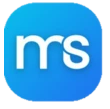Introduction
The landscape of digital design has undergone dramatic transformation as teams embrace remote collaboration, cloud-based workflows, and iterative development processes. Figma stands at the forefront of this revolution as a comprehensive design and prototyping platform that fundamentally reimagines how creative professionals work together. Unlike traditional design software that requires extensive installations, local file management, and manual version control, Figma operates entirely in the cloud, enabling designers, developers, and stakeholders to collaborate in real-time from anywhere in the world.
Figma represents more than just another design tool; it embodies a complete paradigm shift toward collaborative creativity. By eliminating the barriers imposed by file-based workflows and desktop-only software, Figma enables seamless interaction between team members regardless of geographic location or device preference. Whether designing mobile applications, creating brand identities, building design systems, or prototyping complex user experiences, Figma provides the comprehensive toolkit necessary for professional-grade design work within an accessible, cloud-native environment.
Cloud-Native Architecture and Accessibility
The fundamental innovation that distinguishes Figma from traditional design applications is its entirely cloud-based architecture. While legacy design tools require substantial local installations consuming gigabytes of storage space, Figma operates through web browsers without requiring software downloads or manual updates. This accessibility means designers can begin working within seconds on any computer with internet connectivity, eliminating installation barriers and compatibility concerns.
The cloud-native approach of Figma ensures that all work saves automatically and continuously to cloud servers, preventing data loss from crashes, power failures, or forgotten save operations. This persistent synchronization means designers never lose progress and can confidently experiment knowing that every action is preserved. The automatic saving functionality within Figma removes the anxiety associated with manual file management and creates safer working environments for creative exploration.
Figma delivers consistent experiences across different operating systems through its browser-based interface. Whether working on macOS, Windows, Linux, or ChromeOS, Figma presents identical functionality and appearance, ensuring team members enjoy uniform experiences regardless of platform preference. This cross-platform consistency eliminates training complexity and ensures that collaborative work flows smoothly without platform-specific limitations.
Advanced Vector Design Capabilities
At its core, Figma functions as a sophisticated vector design system capable of producing professional-grade graphics for diverse applications. The vector editing tools within Figma provide precision control over paths, curves, and shapes, enabling designers to create everything from simple icons to complex illustrations with mathematical accuracy. The pen tool, boolean operations, and path editing capabilities in Figma rival those of dedicated illustration applications while maintaining superior collaboration features.
Interface design represents a primary strength of Figma, with tools specifically optimized for creating user interfaces, web layouts, and mobile application screens. The constraints system within Figma enables responsive design directly within the canvas, allowing designers to define how elements resize and reposition across different screen sizes. This responsive capability transforms Figma from a static design tool into a platform for creating adaptable, production-ready interface specifications.
Typography handling in Figma demonstrates professional-grade sophistication through support for advanced OpenType features, variable fonts, and precise text styling. Designers can define reusable text styles, maintain typographic consistency across projects, and ensure pixel-perfect text rendering that translates accurately to development. The typography capabilities within Figma make it suitable for both screen design and print-oriented graphics requiring meticulous attention to typographic detail.
Revolutionary Real-Time Collaboration
The collaborative features of Figma fundamentally transform design workflows by enabling multiple team members to work simultaneously within the same document. Unlike traditional design tools where collaboration requires file sharing, version merging, and coordination overhead, Figma allows seamless simultaneous editing where changes appear instantly for all participants. This real-time collaboration eliminates bottlenecks and enables genuinely parallel workflows previously impossible with file-based design applications.
The multiplayer cursor feature within Figma provides awareness of collaborator activities through visible cursors showing where team members are working. This presence awareness prevents conflicts, facilitates implicit coordination, and creates social connection among distributed team members. Watching collaborators work in real-time within Figma recreates the collaborative energy of shared physical workspaces despite geographic separation.
Comment and feedback systems integrated throughout Figma enable contextual communication directly on design elements. Stakeholders can leave specific comments attached to interface components, designers can respond inline, and entire conversation threads remain associated with relevant design areas. This contextual communication within Figma eliminates confusion about which feedback applies to which elements and creates organized documentation of design decisions.
Comprehensive Design Systems and Component Architecture
Figma excels in supporting design system development through robust component and style management features. The component system within Figma enables designers to create reusable interface elements that propagate changes across all instances automatically. When a master component updates within Figma, every instance throughout all files reflects the modification immediately, ensuring consistency and dramatically reducing manual update labor.
The variant system in Figma extends component capabilities by allowing designers to define multiple states, sizes, or themes within single component sets. This sophisticated approach to component organization enables manageable design systems that accommodate complexity without proliferating separate components. The variant functionality within Figma proves essential for maintaining large-scale design systems serving diverse products and platforms.
Shared libraries within Figma enable design system distribution across teams and projects through published component collections. Designers can subscribe to library updates, receive notifications when components change, and selectively accept or reject updates to their instances. This library publishing system within Figma creates sustainable design system workflows that balance consistency with project autonomy.
Extensive Plugin and Extension Ecosystem
The extensibility of Figma through its plugin architecture transforms the application from a fixed-feature design tool into an adaptable platform tailored to specific workflows. Thousands of community-developed plugins extend Figma capabilities in diverse directions, from content generation and accessibility auditing to asset export and design-to-code automation. This plugin ecosystem ensures that Figma adapts to evolving design practices and specialized requirements.
Content generation plugins within Figma accelerate design workflows by populating interfaces with realistic placeholder data, avatar images, or sample text. These automation tools eliminate tedious manual data entry and enable designers to visualize interfaces with representative content instantly. The content plugins available for Figma significantly accelerate the transition from wireframes to high-fidelity mockups.
Developer handoff plugins bridge the gap between design and development by generating code snippets, style specifications, and asset exports directly from Figma files. These integrations ensure developers receive accurate implementation guidance and reduce interpretation errors that cause design-development discrepancies. The handoff capabilities extended through Figma plugins streamline production workflows and improve design fidelity in final implementations.
Interactive Prototyping and User Experience Design
Figma includes comprehensive prototyping features that transform static designs into interactive demonstrations suitable for user testing, stakeholder presentations, and development specifications. The prototyping mode within Figma allows designers to define interactions, transitions, and navigation flows without leaving the design environment or exporting to separate prototyping tools. This integrated approach keeps design and prototype synchronized automatically.
Animation and transition controls in Figma enable sophisticated micro-interactions and screen transitions that communicate intended user experience with high fidelity. Designers can specify easing curves, duration, and animation types to demonstrate exactly how interfaces should respond to user actions. These animation capabilities within Figma prove invaluable for communicating motion design intentions to developers and validating interaction concepts with users.
Device preview functionality in Figma enables immediate testing of prototypes on actual mobile devices or desktop browsers. Designers can generate shareable links to prototypes, conduct remote user testing sessions, and gather feedback on interactive experiences before development begins. The preview and sharing capabilities within Figma accelerate validation cycles and reduce costly late-stage design changes.
Performance Optimization and Modern Interface
Despite operating through web browsers, Figma delivers performance that rivals or exceeds native desktop applications through sophisticated graphics engine optimization. The rendering technology underlying Figma leverages WebGL and modern browser capabilities to achieve smooth panning, instantaneous zooming, and responsive manipulation even with complex documents containing thousands of layers. This performance excellence ensures that Figma remains fluid and enjoyable to use regardless of project complexity.
The user interface design of Figma reflects careful attention to clarity, efficiency, and aesthetic refinement. The clean, modern interface prioritizes canvas space while keeping essential tools accessible through contextual panels and keyboard shortcuts. The interface philosophy within Figma balances feature richness with visual simplicity, avoiding the overwhelming tool clutter that characterizes some professional design applications.
Keyboard shortcuts and workflow optimizations throughout Figma enable power users to work at exceptional speed through muscle memory and efficient command sequences. The comprehensive shortcut system within Figma covers most common operations, and customization options allow adaptation to individual preferences. These efficiency features make Figma suitable for professional designers who demand responsive, streamlined tools.
Version Control and Design History
The automatic versioning system within Figma maintains complete design history without requiring manual save operations or version naming conventions. Designers can browse historical versions, compare changes over time, and restore previous states if needed. This comprehensive history tracking within Figma provides safety nets for experimentation and enables retrospective analysis of design evolution.
Branching functionality in Figma enables parallel design exploration without affecting main files. Designers can create branches for experimental variations, proposed redesigns, or alternative approaches, then merge successful explorations back to primary files. The branching capabilities within Figma support sophisticated workflows where multiple design directions progress simultaneously.
Enterprise Features and Team Management
Team libraries within Figma enable organizational design asset management through centralized component repositories. Administrators can publish official design systems, maintain brand assets, and ensure teams access current resources. The team library functionality within Figma scales from small studios to enterprise organizations with thousands of designers.
Permission controls in Figma provide granular access management for sensitive projects. Organizations can restrict viewing, editing, or commenting permissions based on roles and project requirements. The permission system within Figma enables secure collaboration while protecting confidential design work.
Conclusion
Figma has revolutionized digital design through its cloud-native architecture, real-time collaboration capabilities, and comprehensive feature set addressing the complete spectrum of interface design needs. By eliminating file-based workflows, Figma enables seamless teamwork that transcends geographic boundaries and creates genuinely collaborative creative processes. The advanced vector editing tools, sophisticated component systems, and robust prototyping features within Figma provide professional-grade capabilities accessible through simple browser interfaces.
For design teams seeking to modernize workflows, eliminate version control headaches, and embrace truly collaborative processes, Figma represents the definitive solution. The extensive plugin ecosystem ensures that Figma adapts to specialized requirements, while continuous development from Figma Inc. maintains platform relevance amid evolving design practices. Whether creating mobile applications, designing websites, building design systems, or prototyping innovative user experiences, Figma delivers the tools, performance, and collaboration features necessary for exceptional results. Version 125.9.10 represents the cutting edge of cloud-based design technology, available free for individual designers and scalable to enterprise teams. Download Figma and discover how collaborative, powerful, and accessible professional design tools have become in the cloud era.








